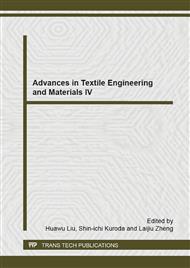p.414
p.418
p.423
p.427
p.432
p.436
p.440
p.444
p.448
Scenario Simulations of Knot-Containing Radiata Boards
Abstract:
Drying deformation of radiata pine boards results in a great loss of revenue to the wood industry. A computer simulation model, which is capable of predicting the drying quality of radiata pine boards, was developed in this paper for pre-grading and for setting of drying schedules in sawmills. Moreover, Logs must be sawn into slabs before drying. Accordingly, the geometrical configurations of boards were generated. Next, the structures of knot-containing boards were modelled on the basis of the growth features of branches. Later, the 2D and 3D scenario simulations of different knot shapes and knot types were performed and illustrated specifically. In the last, the key points in the model development were found and stated.
Info:
Periodical:
Pages:
432-435
Citation:
Online since:
October 2014
Authors:
Keywords:
Price:
Сopyright:
© 2014 Trans Tech Publications Ltd. All Rights Reserved
Share:
Citation:


